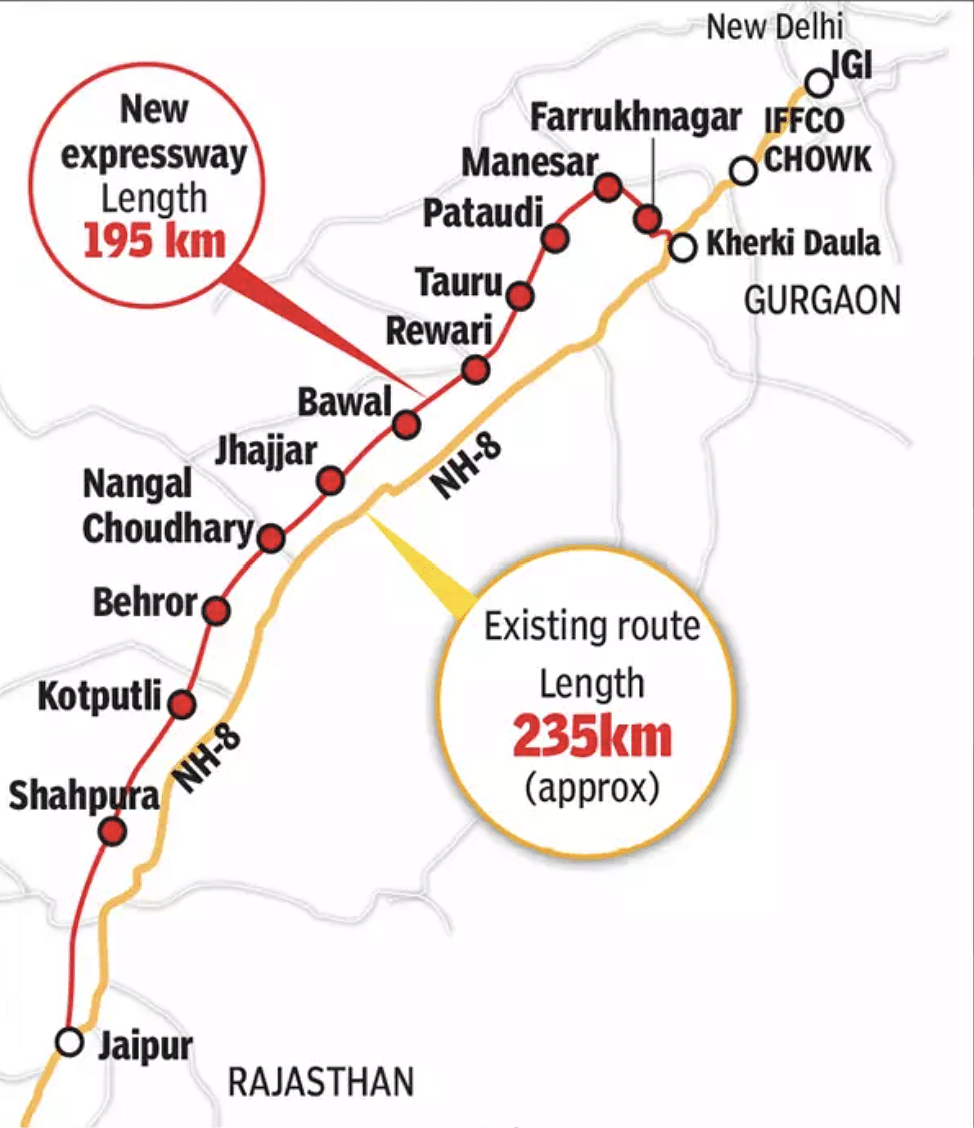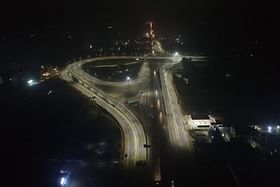The National Highways Authority of India (NHAI) has started work on a new “super expressway” between Delhi and Jaipur that will reduce the distance between the two cities by around 40 km.
The eight-lane (expandable to 16 lanes) Delhi-Jaipur super expressway has been numbered as NH 352B.
The new e-way will, however, not originate in Delhi. It will branch out from the Delhi-Gurgaon expressway near the Kherki Daula toll plaza in Gurgaon and pass through seven districts before terminating near Chandwaji, north of Jaipur, the Rajasthan capital.

The access-controlled corridor will be 195 km long, as opposed to around 235 km that one needs to travel to get to Jaipur from the same point, with a main carriageway of six lanes (three on each side).
The ‘super expressway’ will pass through 423 villages across Gurgaon, Jhajjar, Rewari and Mahendergarh in Haryana and Alwar, Sikar and Jaipur in Rajasthan.
According to a recent ground report by infrastructure video platform, RS live, the NHAI has acquired 4,340 hectares in Haryana and Rajasthan for this mega infrastructure marvel.
The NHAI has already started earthworks on a majority of stretch and the project is expected to complete by 2025, said the report.
An estimated cost of Rs 6,530 crore will be spent on building this new expressway. Its rehabilitation and resettlement cost is also a sizable Rs 5,000 crore as most of the land that needs to be acquired for the project is privately owned.
Long Delay
The greenfield alignment was approved by the state government of Haryana and Rajasthan in 2012 and was approved by the Union government in 2015.
The initial plan involved a 226 km greenfield expressway starting near the Indira Gandhi International (IGI) airport in Delhi and terminating at Daulatpura in Jaipur.
However, the route was modified because of the cost factor and now the expressway will start at NH 48 near Gurgaon and terminate at the Pink City in Rajasthan.
Utility
The Gurgaon-Jaipur commute, which typically takes four to five hours, or even more in heavy traffic, could be completed in just 120 minutes with the implementation of the super e-way.
Currently there are two major routes between the two cities. The first one is Delhi-Jaipur National Highway, which connects the national capital with capital of Rajasthan through Gurugram. Also known as NH 48 (old NH8), the highway runs for 225 km through three states.
Once India’s most-celebrated highway, it is a nightmare now. It has large potholes on the highway showing poor maintenance, besides water-logging issues on service lane. The NHAI has undertaken repair work of the highway at a total cost of Rs 913 crore, by engaging as many as three separate teams of contractors.
The second route involves travelling through the recently inaugurated Delhi-Dausa-Lalsot section of the Delhi-Mumbai Expressway (DME).
Those travelling from Delhi’s Dhaula Kuan will have to take Delhi-Gurgaon expressway to Sohna and then use the DME stretch before making an exit at KM-180 which connects the Agra-Jaipur highway in Dausa. The NHAI is also building a 70 km greenfield link to connect the DME with Jaipur and is scheduled for completion by the end of 2024.
The 246-km stretch will enable people to cover the Delhi-Jaipur stretch in about three hours, banking on eight lanes on each side, providing a smooth ride on the access-controlled road with an automated traffic management system.


